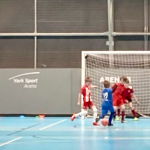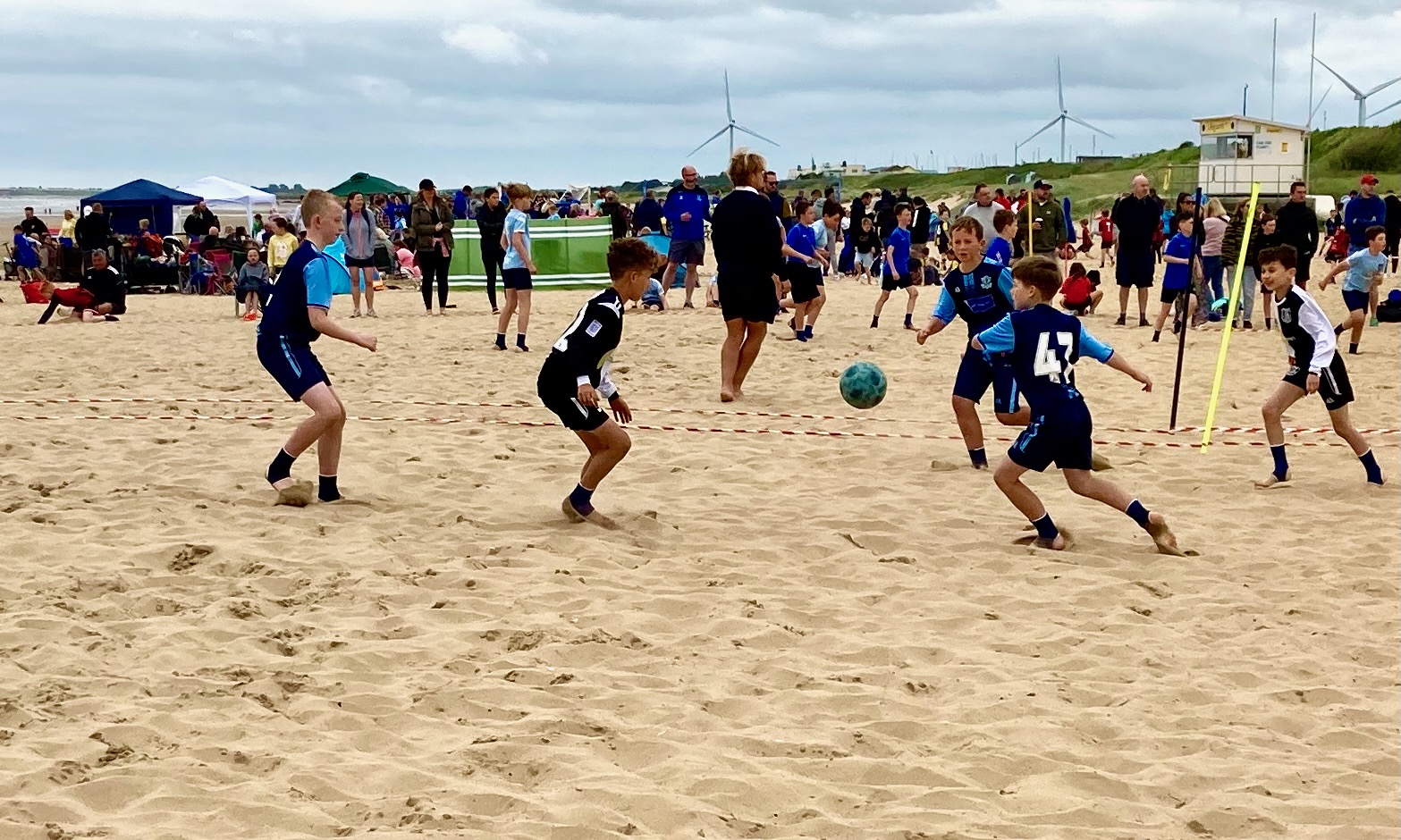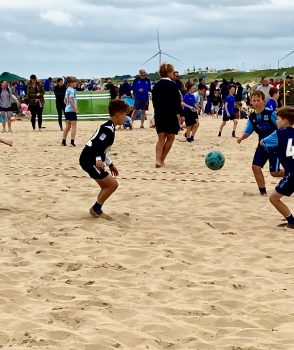My Under 11 football squad played in an East Coast Beach Soccer tournament in Bridlington last week and had loads of fun. What’s more, I think playing the odd game or two on sand will help their development massively.
Beach soccer is not football
Beach soccer (the organisers were keen to stress that they don’t call it beach football!) is, of course, a sport in its own right. I know several coaches who choose not to enter the East Coast tournament precisely because they don’t see the games played there as “football” as they like to teach it – and I understand their point entirely.
However, I think it’s precisely because beach soccer differs from football on grass that makes it a valuable development tool for young footballers.

In that it’s like futsal, which I believe should form part of every good football coaching programme. Futsal promotes close contact in small spaces, making a virtue of tight control and fast reaction speeds. The small pitch and fast surface demand technique over physicality, forcing children to confront a different set of problems to those they might encounter in grassroots football.
Beach soccer is similar, but with key differences. When I took a team to Bridlington last summer, they were murdered. They tried to play the passing and dribbling game they use to some success on the grass. Sand, of course, is a completely different surface to play on. The ball just didn’t respond in the same way. The boys didn’t know how to solve the new set of problems they faced. They didn’t just lose their matches – they were totally outplayed.
Different tactics to on the grass
This year my co-coaches and I relayed a different set of instructions: pass aerially; use minimal touches; shoot on sight. They were tactics to get the ball into what used to be called the “position of maximum opportunity” – POMO – and get as many shots on goal as possible.

We wanted to minimise contact between ball and sand as much as possible – effectively taking it out of the equation if we could. Essentially it meant asking the kids to play kick-and-rush football. For me, like for lots of grassroots coaches, that would normally be anathema. On the beach, it’s survival.
Technique, of course, still plays a part in beach soccer at the highest level. Zico, Matt le Tissier, Romario and Eric Cantona have all played in FIFA’s Beach Soccer World Cup. And they are some of the finest technicians to ever grace a grass football pitch. But that doesn’t mean that they play the same way on sand as they do on the green stuff (or on a futsal or six-a-side court).
“A wicked transdisciplinary challenge”
Children’s development in football and other sports will be limited if they only experience the game through one cultural viewpoint. AIK Stockholm’s James Vaughan and colleagues argued this in a 2019 academic paper which looked at developing creativity as a “wicked transdisciplinary challenge”. (I referenced Vaughan’s work in a post on developing creativity earlier this year.)
Their suggested solution to that challenge was to allow players – especially children – to experience the game through as many cultural lenses as possible.
Beach soccer and futsal do just that. By forcing footballers to think about football-related problems from a different perspective they grow players’ ability to find novel solutions to problems they may encounter in the future.
Value in finding solutions as well as in the solutions themselves
It isn’t just the solutions that make them valuable exercises: it’s the thinking. Being able to face new problems and come up with solutions to deal with them is a critically important skill in itself. It’s certainly one that footballers need as they grow up and start to face different problems as they develop. (A ‘big’ child will one day have to deal with players the same size as them; a ‘fast’ winger will one day have to face an equally quick full-back or be asked to play as a number 10 or a full-back themselves, and so on.)
That is the future. Back in the here and now in Bridlington, the tactics worked – more or less. Both teams from our squad scored goals. Both teams won matches; one team got to the quarter-finals, losing narrowly. Neither team got blown away in any game. It was a transformed performance from last year.
The squad had loads of fun, both on and off the soccer pitches. They visibly bonded with each other and the day undoubtedly strengthened friendships. And they faced different challenges to usual. From a footballing perspective, that may be the biggest benefit of all.

